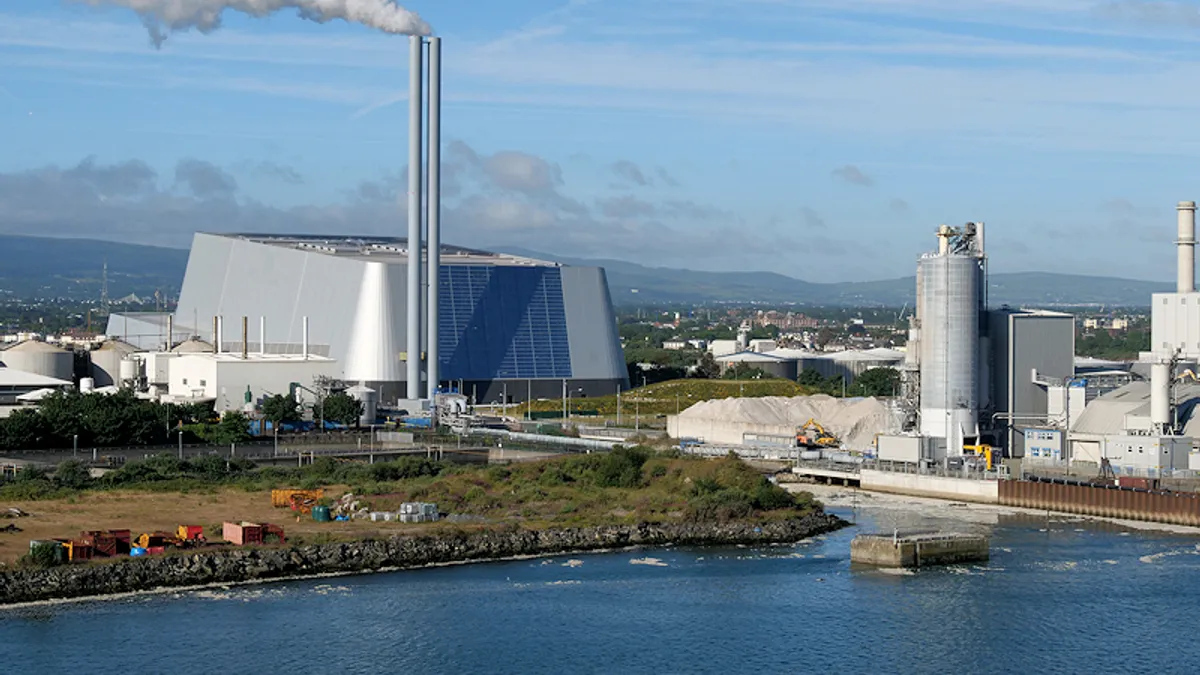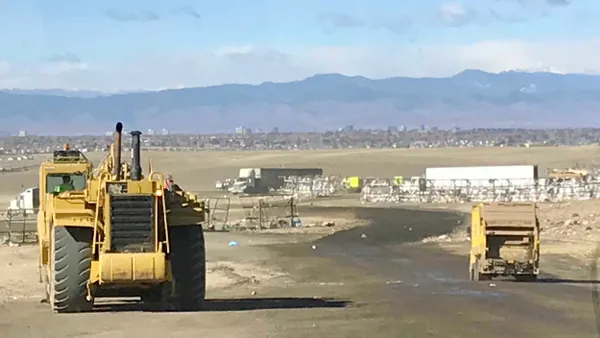2019 Earnings
| Revenue | $1.87B |
| YoY Change | 0.1%▲ |
| Net Income | $10M |
Q4 Earnings
| Revenue | $485M |
| Net Income | $12M |
Covanta ended 2019 by surpassing earnings estimates even with effects from a continually soft market for commodities. Tip fees grew 5% over 2018, along with a notable 11% growth in revenue from profile waste. The company reported processing 21.4 million tons of waste in 2019, setting an annual record.
Despite low prices for energy and metals, executives expressed confidence in the company's trajectory during a Friday earnings call. As part of its 2020 guidance, Covanta now predicts between $415 million and $445 million in EBITDA, along with $100 million to $140 million free cash flow.
WTE remains point of strength
- Covanta's dominance in the WTE market continues to pay off, especially in regions like the Northeast, and pricing growth has continued at rates similar or above what's being reported by major landfill companies. Rollover benefits from some 2019 contracts will likely boost same-store tip fee growth in the 4% range for 2020.
- The company intends to spend an estimated $430 million or more on maintenance this year to strengthen certain facilities. This includes the installation of a baghouse at SEMASS in the Boston region – among the company's most profitable plants – to "increase reliability and performance" according to CEO Steve Jones.
- Jones also reported "active discussions with multiple client communities" about new or replacement capacity in the United States. While he acknowledged those development cycles "can be long," Jones indicated an increasingly optimistic expectation that new U.S. capacity will happen eventually.
While much of Covanta's infrastructure growth continues to be in other countries, executives also sounded an upbeat tone about the potential to keep increasing overall profile waste volumes at higher price points. Within that category, regulated medical waste (RMW) revenue grew by 40% in 2019 and Jones reiterated Covanta's plans "to become the clear leader in wholesale disposal for must-incinerate RMW in the U.S."
Covanta is also looking to capitalize on sustainability concerns surrounding methane emissions from landfills. While environmental groups argue incinerators pose their own concerns from an air quality and pollution standpoint, Covanta has repeatedly emphasized its technology as more desirable. On the call, Jones also touted the smaller geographic footprint of Covanta's facilities as well as their unique proximity to population centers. In a nod to this evolving sustainability narrative, the company recently pledged to set a "science-based greenhouse gas reduction target" by 2022.
"That movement in society is going to continue to help us from a profile waste standpoint. So, we feel pretty good about where things are headed in that direction," said Jones.
Notable themes
- Soft commodity pricing continues to be a "significant negative" hurdle for Covanta in the lines of both metals recovery and energy production. Challenges in both categories contributed to a $37 million revenue headwind in 2019. The outlook is expected to be similar for 2020, though the company said it plans to "hedge where possible" and invest in new products to mitigate the hit.
- Covanta's new Total Ash Processing System (TAPS), seen as the biggest opportunity for improving revenue from metals recovery, is now commencing start-up activities in Pennsylvania. The company anticipates spending $24 million on TAPS between 2019 and 2020, with discussions underway about a possible second location.
- Energy prices also remain under pressure, with storage levels likely at historic levels as winter winds down. Covanta enters 2020 with only 1.1 million megawatt hours exposed, lower than typical levels for the company. Over 85% of Covanta's 2020 revenue is now contracted or hedged and the company expects improved margins on approximately 500,000 megawatt hours annually through 2023.
Looking ahead
- Jones emphasized the U.K. remains an "extremely attractive market" for Covanta with multiple projects expected to be complete in the coming years. Three plants — Earls Gate, Rookery, and Newhurst — are in construction, and the Protos project is "well advanced" in reaching its goal of financial closure by year's end. Other projects are in the pipeline with one or more announcements potentially coming this year.
- China is also seen as "a big market" with significant government support according to Jones. While the company's recently announced Zhao County plant was described as small, China is expected to build around 200 such facilities in the next five-plus years so more opportunities could arise.
- Similar to their Q3 earnings call, Jones and CFO Brad Helgeson acknowledged a target of reaching $250 million free cash flow within the next five years is now less likely. Helgeson said one factor was that commodity values "moved against us pretty meaningfully," noting the target was still attainable but "it's just going to take us more time."









